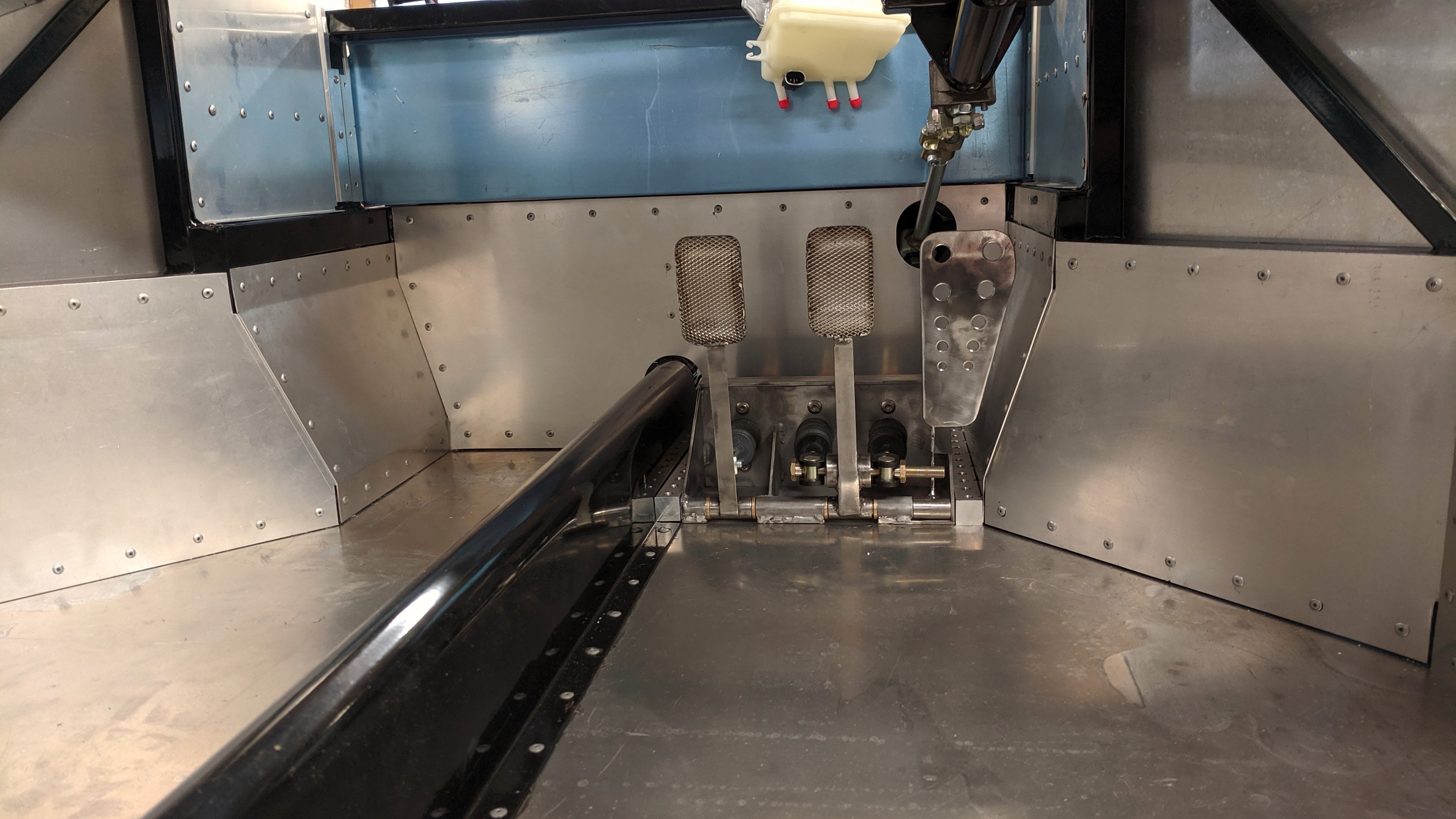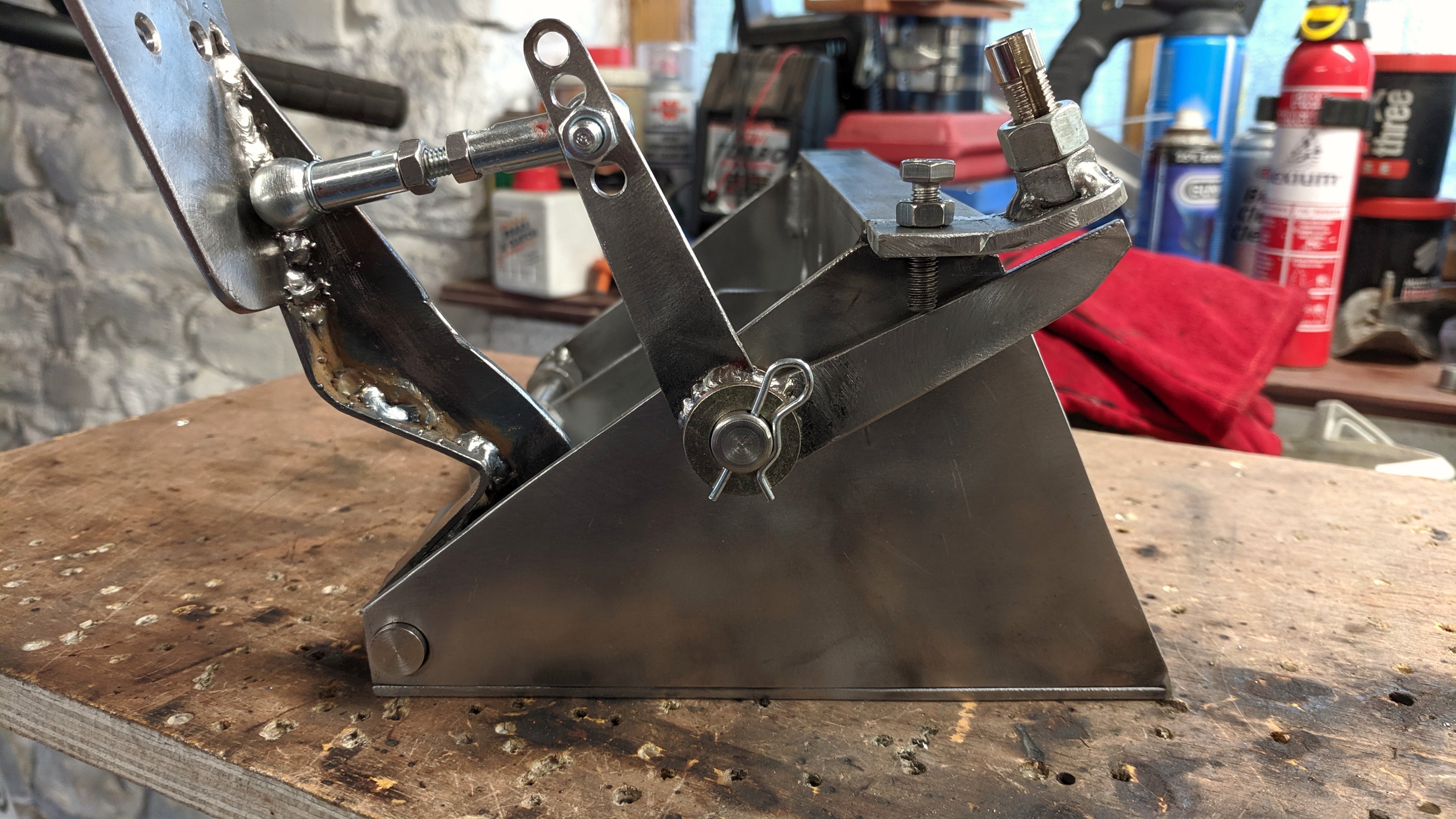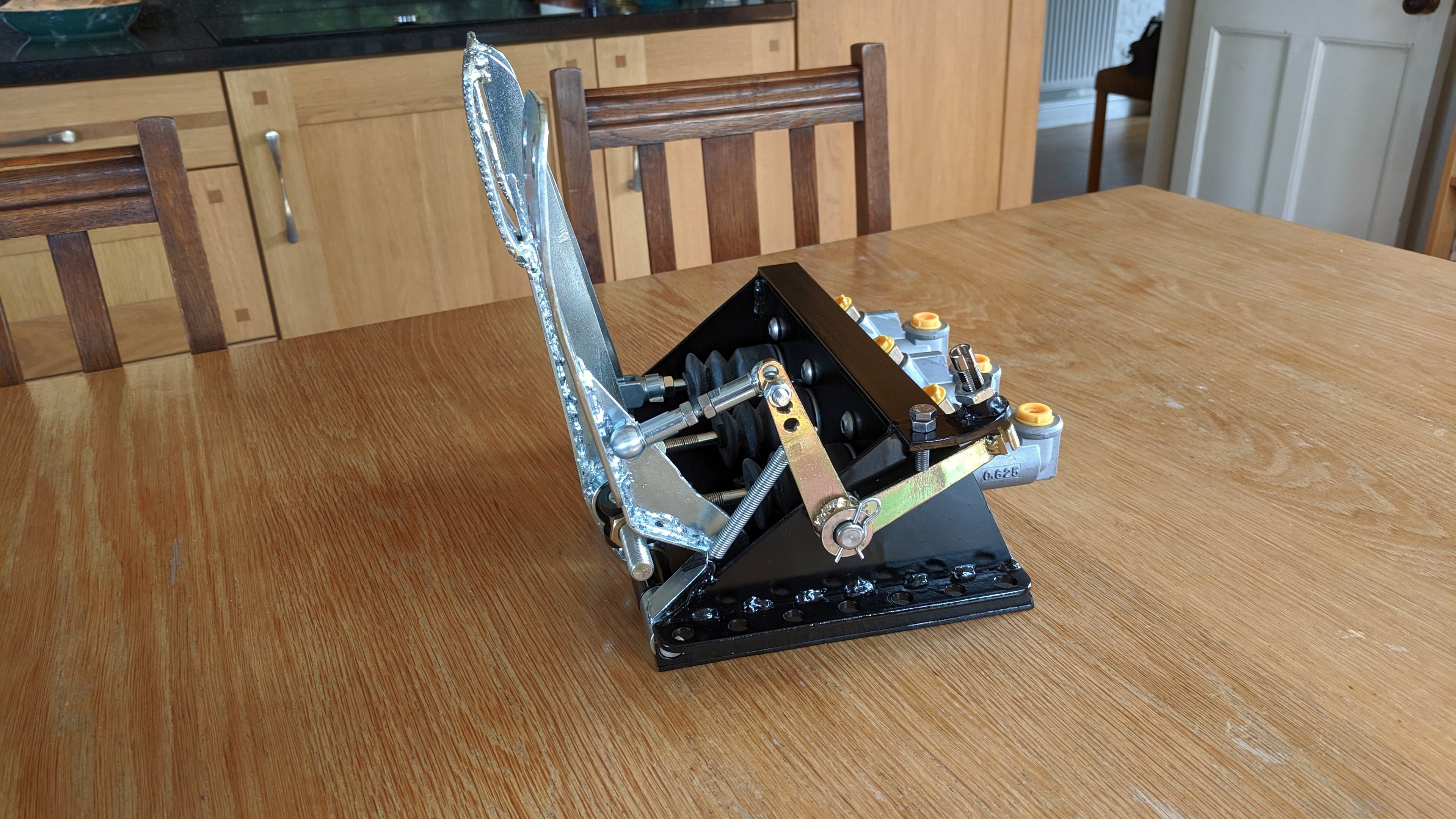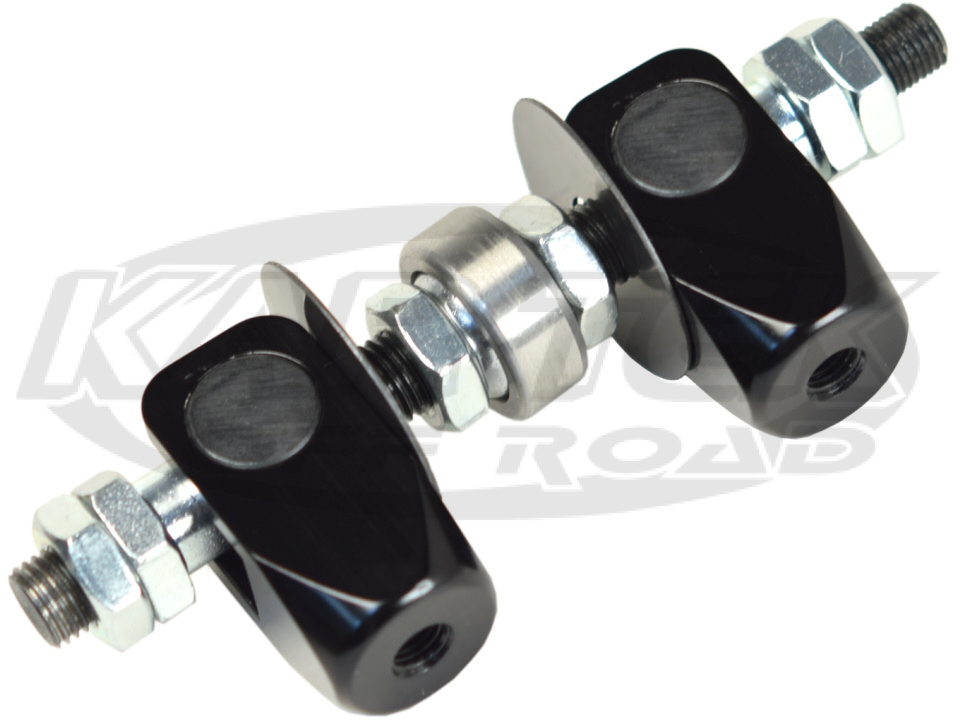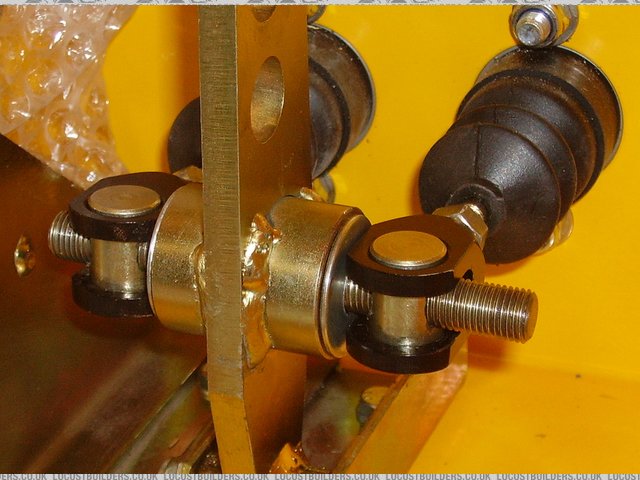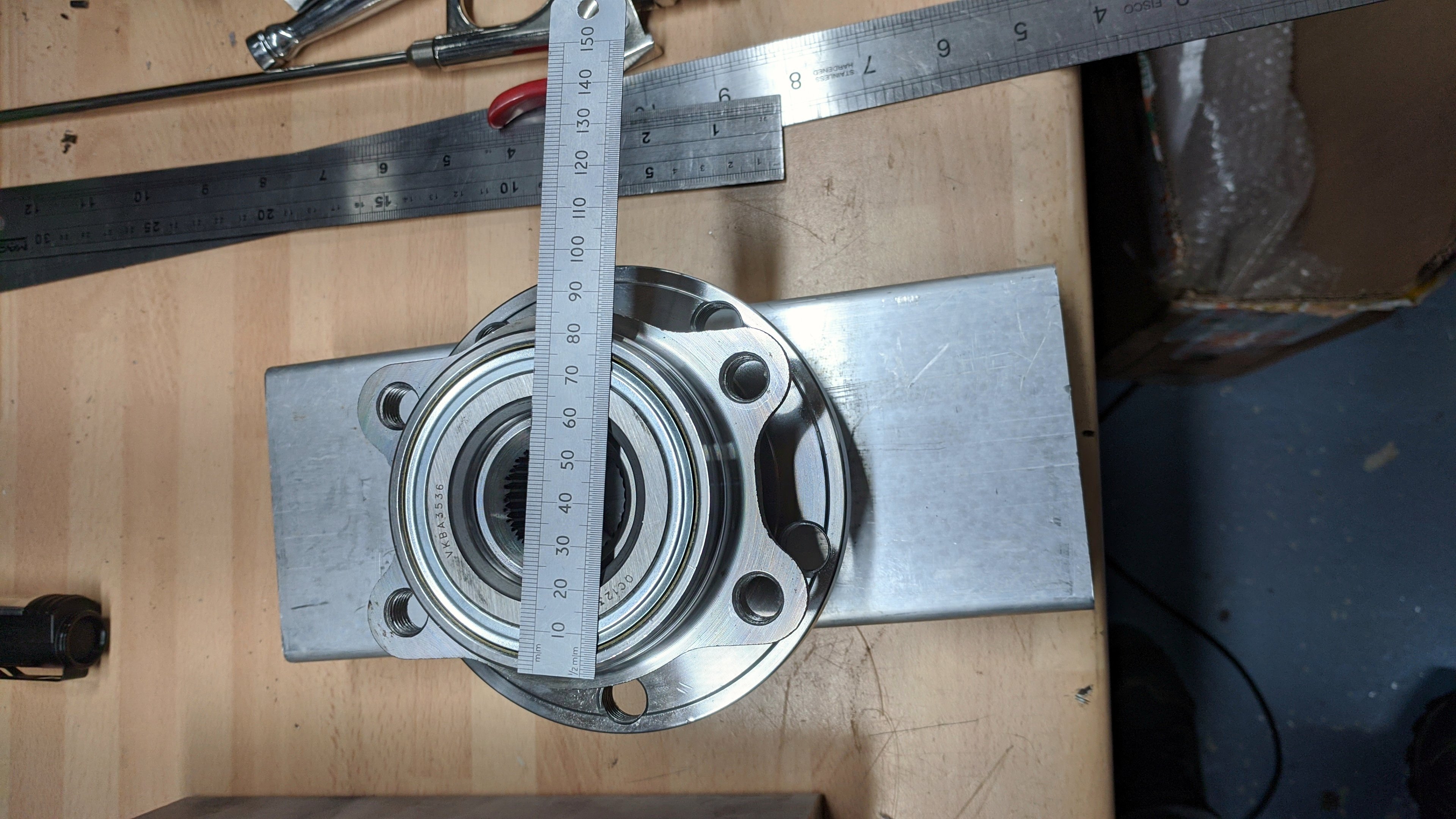A pair of front uprights have arrived in the post...
But they're hidden somewhere within these two large blocks of aluminium, and I need to dig them out. That's a rear hub/bearing assembly in the picture (you can see the drive splines), so I'll be using one of these....
....on the front uprights, and fabricating steel uprights for the rear. Both hub assemblies are Audi / VAG 5 x 112 PCD units, which give a wide choice of brake diameters and offsets with a 68mm centreing hole. Mercedes uses the same PCD (though with a 67mm centreing hole) which opens up the option of 295mm x 30mm discs with an integral bell:-
which ought to fit inside a 15" rim. Failing that, there are several VAG 288mm discs, though none with such a large bell.
The plan for the front uprights is to mimic the geometry of the John Wisher uprights, because the SGT susp mounts and wishbone lengths are designed for these components. It would be much simpler just to buy a set of the cast uprights, but they're over £1k per corner and there just isn't that much in the budget. I know that
@Jim C built some ally uprights for his RF105, and
@blueovalz built some for his Manta, and the plan is for something like that. I plan to bore the bottom of the upright to take a steel sleeve with the correct taper for bottom balljoint, and mill out a pocket above that to get to the balljoint nut. Somewhere in the centre of the upright I'll machine out an 80mm x 18mm circular recess to take the back of the hub/bearing assembly, and have this as a close fit to take the susp loads into the uprights, and not rely on the 4 x mounting bolts. At the top, there'll be a bolted-on assembly for the upper balljoint, and the plan is to have it bolted to the inner part of the upright...
so that if necessary I can shim between the top mount and the upright, giving me camber adjustment which is independent from SAI/KPI (or vice-versa). I think it should be possible to integrate the steering arm into the top balljoint mount, like the second picture. Caliper mounts? Not sure yet.
So....what are the dimensions of the John Wisher uprights? Somewhere between 200mm and 220mm between top and bottom balljoints, with 8 to 10 degrees of SAI?
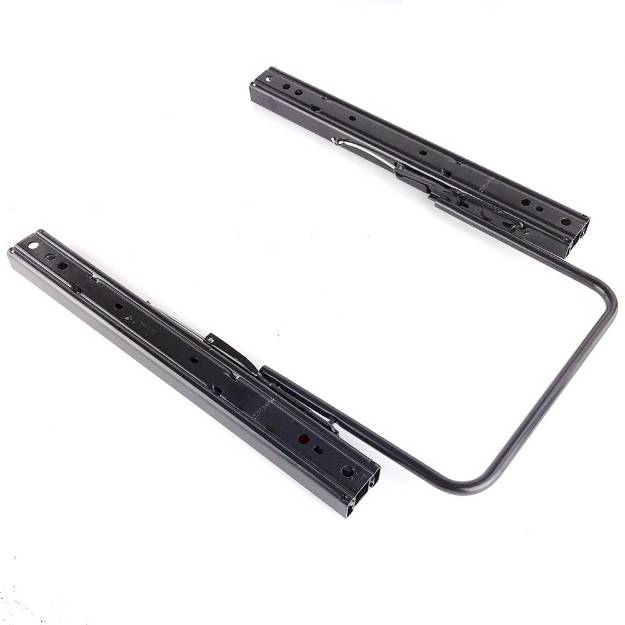
 www.carbuildersolutions.com
www.carbuildersolutions.com







